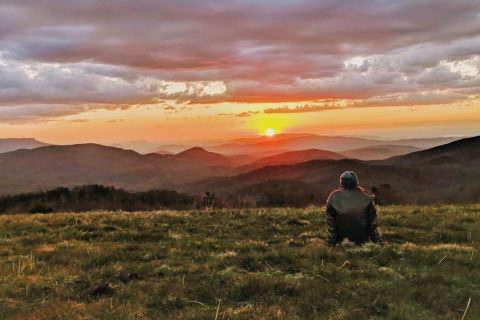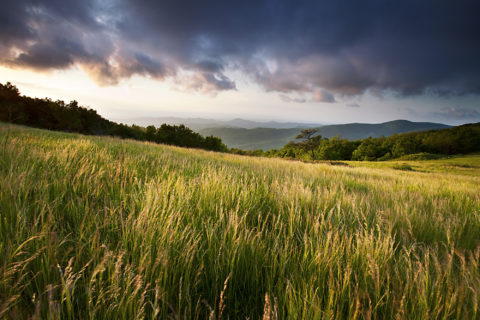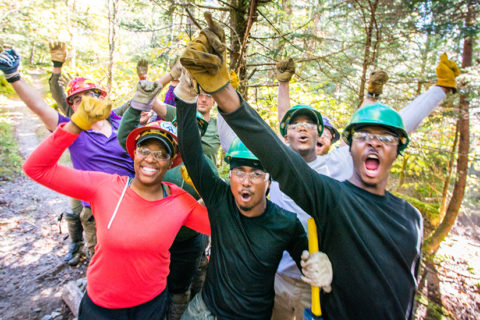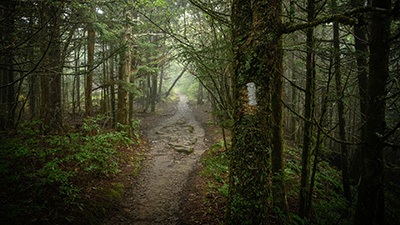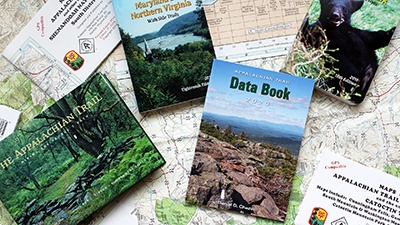by Patrick Slaughter
Practical Applications: Lessons from Wilderness Skills Institute
The Wilderness Skills Institute (WSI) is a great educational program that furthers the knowledge of wilderness stewardship and the wilderness. The program is designed to provide volunteers, agency and partnership staff growth within their unique skill sets.
During the two weeks of WSI, I understood why classes like wilderness first aid, crosscut saw training, and trail structures are important. In addition, the opportunity to network and gain new friends by camping and learning side-by-side was life changing to me. These were the things I learned: how wilderness relates with my major in school, as well as why we should be cognizant about safety and important techniques of trail maintenance.

WSI introduced me to Wilderness First Aid (WFA) that prepared me for the unexpected in the wilderness because pretty much anything can happen out there. I learned to look at the scene before rushing ahead to help. After checking that it’s safe for me and my team, then I can check to see that my patient is alright. Once the scene is safe, if I discover my patient is not breathing, I also can perform Cardiopulmonary Resuscitation (CPR) to attempt to save his or her life. I learned this technique at WSI, too.
WSI has also made me more cognizant about the need for trail maintenance. It’s important to remove trees that might block the trail that might make people create a new trail to go around the tree. As part of my training, I learned how to do this using a crosscut saw and axe. Whether clearing a blowdown or building a reverse grade dip, making work along the trail look natural and undisturbed by the untrained eye is part of doing the job right.

In the advanced trail structures class, the focus was on using stones to help people traverse steep slopes as well as reducing erosion that creates gullied trails. One way we can stop water erosion with rock skills is to build a crib wall using boulders and fill behind with crushed stone which helps to dissipate water.
While at WSI I spoke with several landscape architects, who explained to me the need for this profession within for the U.S. Forest Service. Landscape architects in the forest service look at large-scale acreages of land, many contour lines, the layout of trails, and focus on working to keep it all natural because it’s a forest. For landscape architects designing roads, they may spend time asking questions like: “should this spot be cleared for an overlook along this road?”

To illustrate, imagine having nothing but trees to look at verses having breaks in the trees to see views of the mountains. That’s just one example of landscape architecture utilizing the landscape itself, utilizing what’s already here, to fulfill design objectives: native plants and mountain to accentuate the great spaces in the national forests.
The Wilderness Skills Institute allowed me to increase what I know about wilderness, safety, and trail maintenance, and offered me the opportunity to gain certifications that will allow me to protect the wilderness and make a difference. For this reason, I feel obligated to learn more about the wilderness by participating in something that will help the wilderness. That’s why, I can’t wait to get back in college and see what types of clubs that relate to WSI.
Blogger: Patrick Slaughter
Title: Trail Skills Intern, Appalachian Trail Conservancy
Based out of Asheville, NC
Affiliation: Landscape Architecture student, North Carolina A&T State University
in Greensboro, NC

